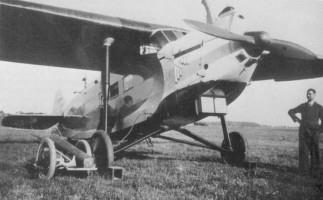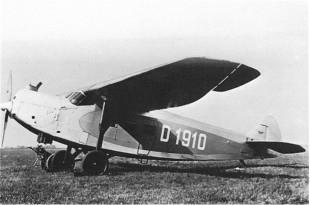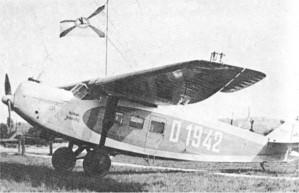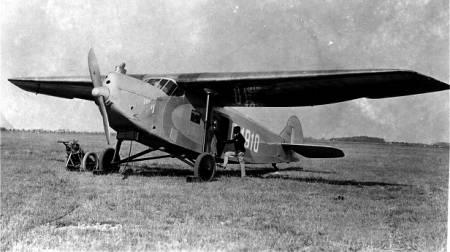The Focke-Wulf A 32 Bussard (German: "Buzzard") was a small airliner produced in Germany in the early 1930s. It was developed rapidly at the request of NOBA when Messerschmitt was unable to deliver aircraft on schedule. Based closely on the A 20, the A 32 had a revised fuselage with greater seating capacity, and an engine of over twice the power. The two examples operated by NOBA became part of Deutsche Luft Hansa's fleet in 1934.
The flight deck was enclosed on the A.32 and was incorporated into the fuselage below and ahead of the high-mounted thick wing. The passenger cabin was under and aft of the wing. The tailskid undercarriage featured a wider tread on the mainwheels, and those wheels were supported by struts running up to the wings' undersides. The nose-mounted piston engine was cooled by a radiator mounted in the airstream on the belly of the fuselage under the flight deck.
The " Bussard," which is fitted with a 280-310 h.p. Junkers " L-5 " engine, is intended principally for passenger work on medium services up to 360 miles, such as are usual in the * European air traffic. Ability to undertake abnormally long flights has been abandoned in favour of economy, with the result that this machine can carry two pilots and six passengers with 300 h.p.
The full cantilever wings-of thick section tapering from root to tip of typical Focke-Wulf " Zanonia " or taube shape--are in one piece and of all-wood construction, including the covering.
Welded steel tubes, on the other hand are used for the construction of the fuselage, the covering being sheet metal at the engine section, plywood for the cabin, and the rest fabric.
As regards performance, the " Bussard " has a maximum speed at ground level of 119 m.p.h., a cruising speed of 101 m.p.h., and a landing speed of 50 m.p.h. It climbs to 3,280 ft. in just over five minutes and to 9,840 ft. in 24 minutes.




| Type |
1-2 + 6-7 passenger plane |
| Engine |
1 Junkers L5 |
| Dimensions |
Length 12.20 m, height 3.25 m, span 16.00 m, wing area 34.5 m2 |
| Weights |
Empty 1465 kg, fuel 235 kg, flying weight 2300 kg |
| Performance |
Max. speed 190 km/h, cruising speed 162 km/h, climb 2.5 m/sec., to 1000 m 5.7 min., to 3000 m 23.2 min., service ceiling 4500 m, required runway for take off 450 m, landing speed 80 km/h, range 750 - 900 km, |
| Type |
Werk.Nr |
Registration |
History |
|
95 |
D-1910, D-OBES |
Delivered to the Nordbayerische Verkehrsflug GmbH in 1930. To Deutsche Verkehrsflug in Nov. 1931. To DLH in 1934 |
|
96 |
D-1942, D-ODUL |
Delivered to the Nordbayerische Verkehrsflug GmbH in 1930.To Deutsche Verkehrsflug in Nov. 1931. To DLH in 1934 |
|
104 |
D-1997 |
To DVS GmbH in July 1932. Destroyed in June 1934 |
|
105 |
D-2079 |
In May 1931 to DVL |
|
113 |
D-2129 |
In Aug. 1931 to DVS GmbH. Destroyed in June 1934 |




